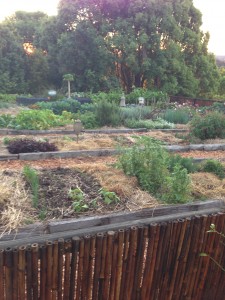Raised garden beds, also sometimes called garden boxes….
are excellent for growing plots of vegetables and flowers. Not only do the look great, they are also effective at protecting plants from a variety of sources of harm.
If you’re considering setting up a home garden and are debating whether to use containers or plant straight into the ground, here are 10 great reasons why raised garden beds could be the best choice for you:
You can protect your plants from pests.
- Raised beds often provide a layer of protection from pests such as slugs and snails. If you live in an area where there are rodents – especially underground, such as moles or groundhogs, you’re also less likely to have an infestation of them. While not foolproof, raised bed or container gardening do help and are a kinder alternative than poisons or traps.
They virtually eliminate weeds.
- The nature of the beds, as well as the manner in which plants grow in them (read further to learn more) mean fewer pathway weeds will grow in your raised flower bed or vegetable garden.
It’s better for your soil.
- Raised garden beds provide great drainage and prevent the sides of beds from being eroded or washed away entirely in times of heavy rain.
Your soil gets warmer earlier, and stays warmer longer.
- The nature of raised beds means they warm up earlier than home gardens placed directly into the Earth, and they stay warmer for longer each year. As a result, this extends your growing season. A vegetable garden planted in this manner will likely see bigger yields each year.
They’re kinder on your body.
- Raising soil levels means you don’t have to bend over as far, reducing the strain on your back and pressure on your knees. This makes them a go-to method for older gardeners or anyone with health issues. Furthermore, if raised beds are built sturdily, you can even sit on the edge of them to do a bit of gardening.

They offer access to nutrients.
- Raised garden beds differ from container gardening in that they don’t have bottoms. While containers prevent soil from falling out, they also don’t enable plants to develop deep roots. Raised beds, in comparison, keep soil protected, but are open to the Earth, allowing plants to form roots deep into the ground and better access natural nutrients.
They end soil compaction.
- Once you dig in your vegetable garden, as a general rule you should never walk in that area again, to avoid compaction. Doing this will ruin your hard work! In ground garden beds can be subject to the footprints of kids and the family dog, and make it tempting to walk across your home garden to access different areas. Raised beds allow access from all sides and clearly define areas that are “off limits” for footprints.
They’re particularly great for veggies.
- In raised beds, your vegetable garden can be spaced in geometric patterns, letting plants grow closer together than conventional row gardens. As leaves grow touching each other, they create a microclimate that conserves moisture and suppresses weeds. The deep soil also allows for deep growth of vegetables like carrots and potatoes. Just add compost the same as you would with standard veggie beds and repeat far greater benefits.
It’s great for conserving water.
- While raised garden beds can be effective for drainage, they also make good use of the moisture they do receive. In areas with sandy soil, raised beds retain water better. In areas with clay-based soils, raised beds drain better.
You can increase your growing space.
- In addition to raising your home garden, you may also want to round the tops of each raised bed. By setting up a raised bed with a rounded top instead of a flat one, you can expand a five-foot bed to a six-foot growing space
This is just one of the many ways you can grow food in small spaces or even with limited mobility.
Growing food is a dying art and one that brings families together, puts meaning back into the kitchen the garden and the soul.


Leave a Reply